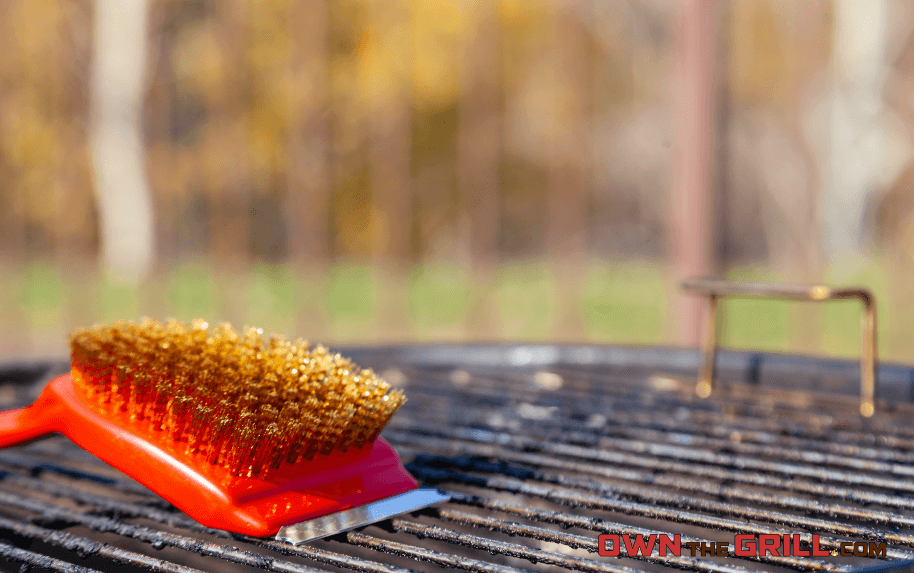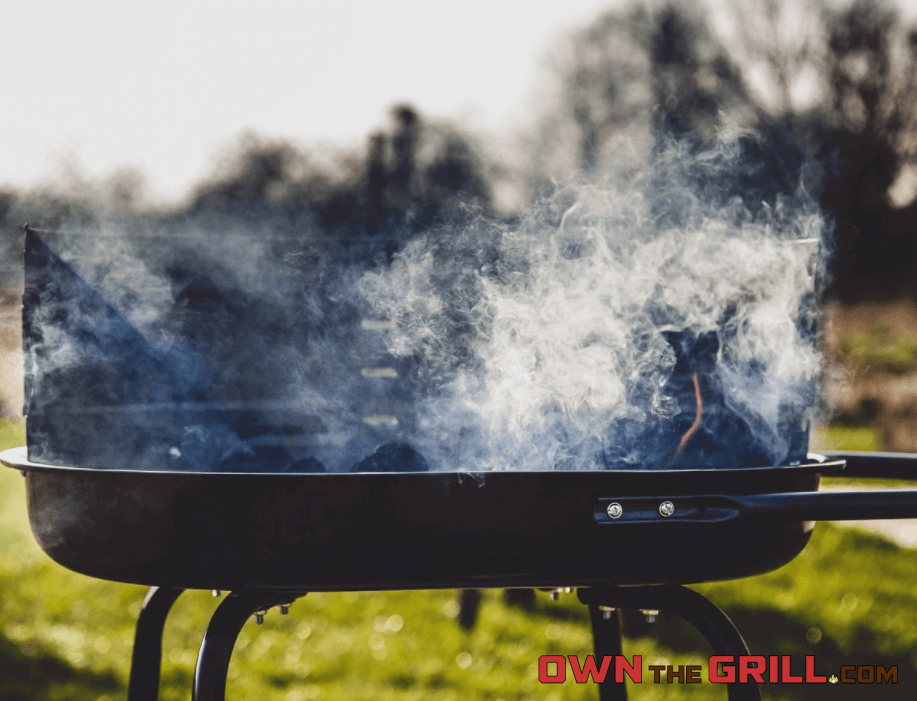One of the most essential and hotly debated barbecue techniques revolves around wrapping brisket. Often referred to as the “Texas Crutch,” wrapping brisket can significantly influence the final flavor, texture, and moisture of your smoked brisket. Pitmasters frequently debate the merits of butcher paper versus aluminum foil. In this ultimate guide, we’ll provide a deep dive into both options, plus everything else you need to know to perfect your brisket-smoking skills.
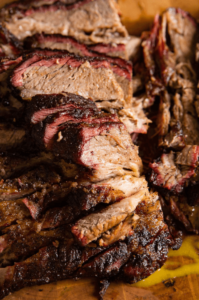
Why Wrap a Brisket?
If you’ve ever smoked brisket, you’ve probably encountered the infamous “stall,” a plateau in cooking temperature around 150–170°F. This stall occurs when moisture evaporates from the brisket’s surface, cooling the meat and dramatically slowing the cooking process. Wrapping brisket at the right moment helps push through this frustrating phase, significantly reducing overall cook times and ensuring your brisket stays juicy.
Beyond beating the stall, wrapping brisket helps retain moisture within the meat, essentially braising it in its own juices. It also protects the bark—the delicious, flavorful crust that forms during smoking—from becoming overly charred or burnt, while still maintaining desirable texture and flavor.
When and How to Wrap Your Brisket
Choosing the ideal moment to wrap brisket is crucial. The best rule of thumb is to wrap when your brisket reaches approximately 165°F internal temperature. However, it’s equally important to inspect the bark visually—you’re aiming for a firm, dark bark that doesn’t scrape off easily when touched.
When it’s time to wrap, use either two large sheets of heavy-duty aluminum foil or food-grade pink butcher paper. Wrap it tightly, ensuring there are no loose ends or large air pockets. For additional flavor and moisture, you might add a tablespoon or two of beef broth or melted beef tallow inside the wrap.
Aluminum Foil: Pros and Cons Explained
Using aluminum foil for wrapping brisket, known as the Texas Crutch, is popular because it significantly reduces cooking times. By tightly sealing brisket in foil, you create an environment that traps moisture and steam, quickly overcoming the stall.
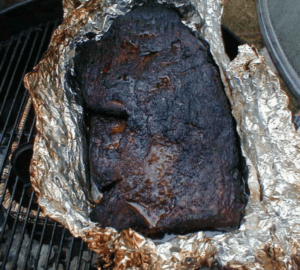
However, this tightly sealed method softens the bark, making it less crunchy, and stops the brisket from absorbing additional smoke. It yields a slightly milder smoke profile, although it delivers incredibly juicy and tender meat—almost akin to a beef roast texture.
A trusted product to use is Reynolds Wrap Heavy Duty Aluminum Foil, offering superior durability for hassle-free wrapping.
Butcher Paper: Pros and Cons Explained
Butcher paper, particularly the pink “peach paper,” has become incredibly popular in recent years due to its balance between moisture retention and bark integrity. Its porous nature allows a slight release of steam and continued smoke penetration, preserving both bark texture and robust smoky flavor.
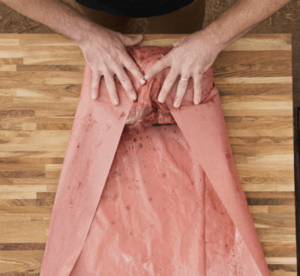
While butcher paper takes a bit longer to push past the stall compared to foil, many pitmasters find the improved bark texture and smoke flavor worth the wait. However, butcher paper wrapping requires practice to ensure a snug fit without leakage.
For butcher paper, the top recommendation is the Pink Kraft Butcher Paper Roll – 18″ x 100′, an unwaxed, FDA-approved paper perfectly suited for BBQ smoking.
- Large roll with easy tear box dispenser
- Refill rolls widely available
No Wrap (Bare Brisket): What You Need to Know
Choosing not to wrap your brisket is also an option. It yields the crispiest bark and most intense smoke flavor. However, this method requires significantly more patience due to extended cooking times and presents a greater risk of drying out, especially with leaner cuts.
If you prefer a traditional, bold barbecue flavor with crunchy bark, consider this approach—but keep a close eye on moisture management through regular spritzing and temperature control.
Butcher Paper vs. Aluminum Foil: Quick Comparison Table
To help visualize your options, here’s a straightforward comparison of the key characteristics of butcher paper, aluminum foil, and no wrapping methods:
| Method | Cook Time | Moisture | Bark Texture | Smoke Flavor |
|---|---|---|---|---|
| Foil | Fastest | Highest | Softest | Mildest |
| Paper | Moderate | High | Firm | Robust |
| Bare | Slowest | Lower | Crispiest | Strongest |
Expert Tips for Perfect Brisket Wrapping
Mastering brisket wrapping is easier with expert guidance:
- Let bark color and firmness dictate wrapping timing rather than temperature alone; it ensures optimal bark and flavor.
- Rest the brisket wrapped for at least one hour after cooking; this crucial step allows juices to redistribute, ensuring moist, tender slices.
- Always choose high-quality materials: heavy-duty aluminum foil or genuine food-grade butcher paper specifically designed for barbecue.
- Consider your timeline—foil wrapping is perfect for tight schedules, while butcher paper gives a better balance between convenience and quality bark.
Final Thoughts
Ultimately, choosing between wrapping brisket in butcher paper or aluminum foil depends entirely on your priorities. For maximum speed and juicy tenderness, aluminum foil is your best bet. Butcher paper offers an excellent compromise, balancing smoke penetration, bark integrity, and moisture. If traditional smoky flavor and crispy bark are paramount and you’re willing to invest extra cooking time, going unwrapped is a flavorful adventure worth trying. Feel encouraged to experiment and find your signature brisket wrapping method.
FAQ Section
When should you wrap brisket during smoking?
Wrap brisket around 165°F internal temperature or when the bark is dark and set. Wrapping at this stage helps you push through the stall effectively, preserving moisture and bark texture.
What does wrapping brisket in foil accomplish?
Wrapping brisket in foil significantly reduces cooking time and retains moisture. However, foil softens bark texture and slightly diminishes smoke flavor intensity.
What is butcher paper’s benefit when smoking brisket?
Butcher paper lets brisket “breathe” slightly, maintaining bark firmness and enhancing smoke flavor. It’s a great middle-ground method offering balanced bark texture and moisture.
Can I wrap brisket too early?
Yes, wrapping brisket too early prevents bark from properly developing. Wait until your brisket has a firm, well-developed bark before wrapping for best results.
What’s the best foil for wrapping brisket?
Heavy-duty aluminum foil (like Reynolds Wrap) is best for brisket wrapping. Its durability ensures a tight wrap without tearing or leaks, crucial for moisture retention.
Does butcher paper speed up brisket cooking?
Yes, butcher paper moderately speeds up brisket cooking, though not as drastically as foil. It helps manage the stall while maintaining excellent bark and flavor.
Why use no wrap method for brisket?
Going unwrapped yields the strongest bark and smoke flavor, perfect for traditionalists. However, it risks drying meat and significantly lengthens cooking time.
Should I add liquid when wrapping brisket?
Adding liquid (beef broth, apple juice, or beef tallow) is optional. It can slightly boost moisture, particularly when using butcher paper, enhancing flavor and tenderness.
How long should brisket rest after smoking?
Rest brisket wrapped for at least an hour after smoking. Resting allows juices to redistribute evenly, improving texture and overall eating experience.
Does wrapping brisket affect smoke flavor?
Yes, foil wrapping limits smoke absorption once wrapped, producing milder smoke flavor. Butcher paper continues to allow some smoke penetration, offering a more robust flavor.
Which method gives the crispiest bark?
Not wrapping brisket produces the crispiest bark. If a crunchy bark is a priority, avoid wrapping entirely.
Can I switch wrapping methods mid-cook?
Yes, some pitmasters start wrapping with paper and switch to foil if needed. Adjusting mid-cook can help manage timing or bark texture and moisture.
Is it safe to wrap brisket in parchment paper?
No, standard parchment paper often contains silicone or coatings unsafe for prolonged high-heat cooking. Always choose FDA-approved butcher paper specifically for BBQ use.
Does wrapping brisket make it juicier?
Absolutely. Wrapping retains brisket’s moisture, essentially braising the meat in its juices, ensuring a tender, juicy outcome.
What’s Aaron Franklin’s preferred brisket wrap?
Aaron Franklin famously uses pink butcher paper. This technique strikes an excellent balance between moisture retention, bark preservation, and smoke flavor.
Recommended YouTube Video for Further Learning
For additional visual learning, check out this helpful YouTube video from BBQ expert Aaron Franklin demonstrating the butcher paper wrapping technique. When you’re done, check out our Ultimate Guide to Brisket.
Discover more from Own The Grill
Subscribe to get the latest posts sent to your email.




